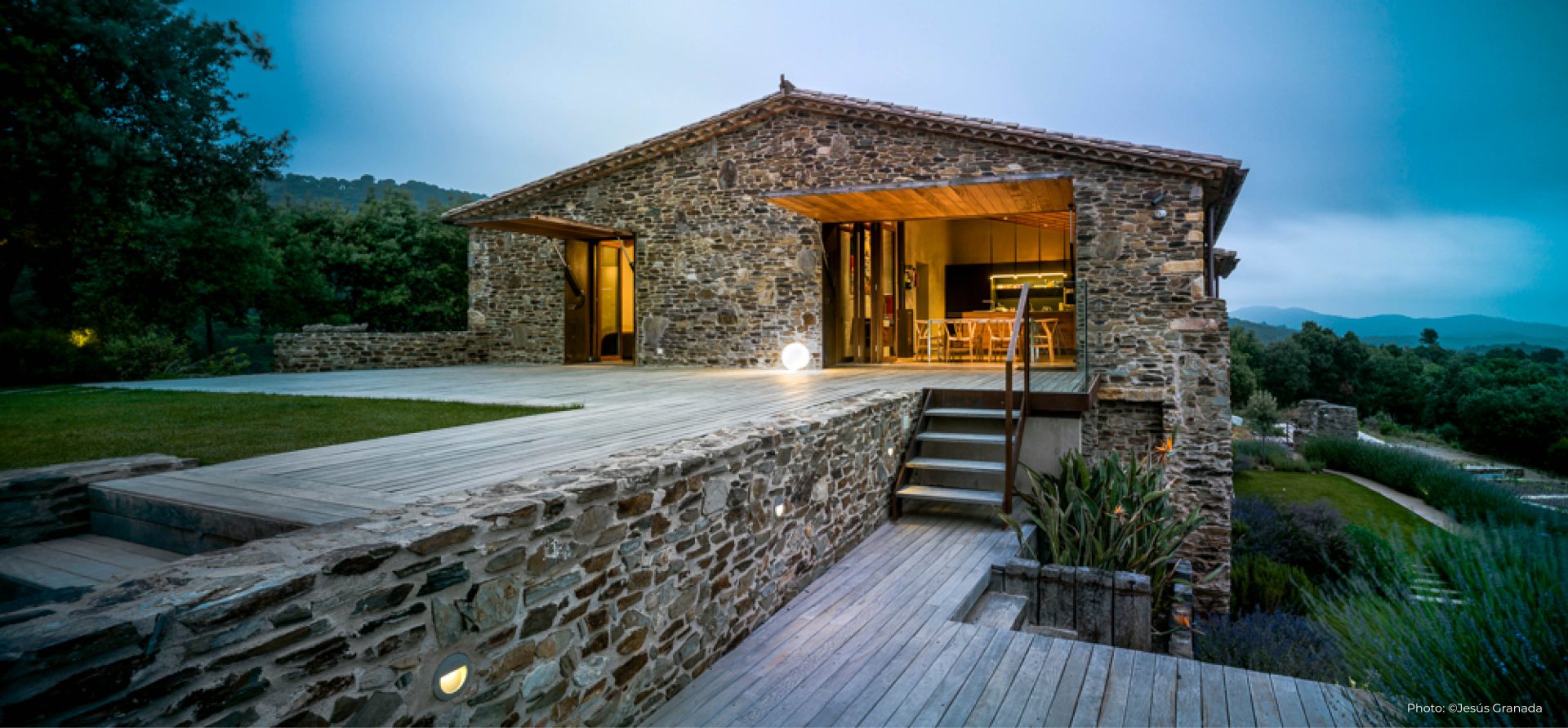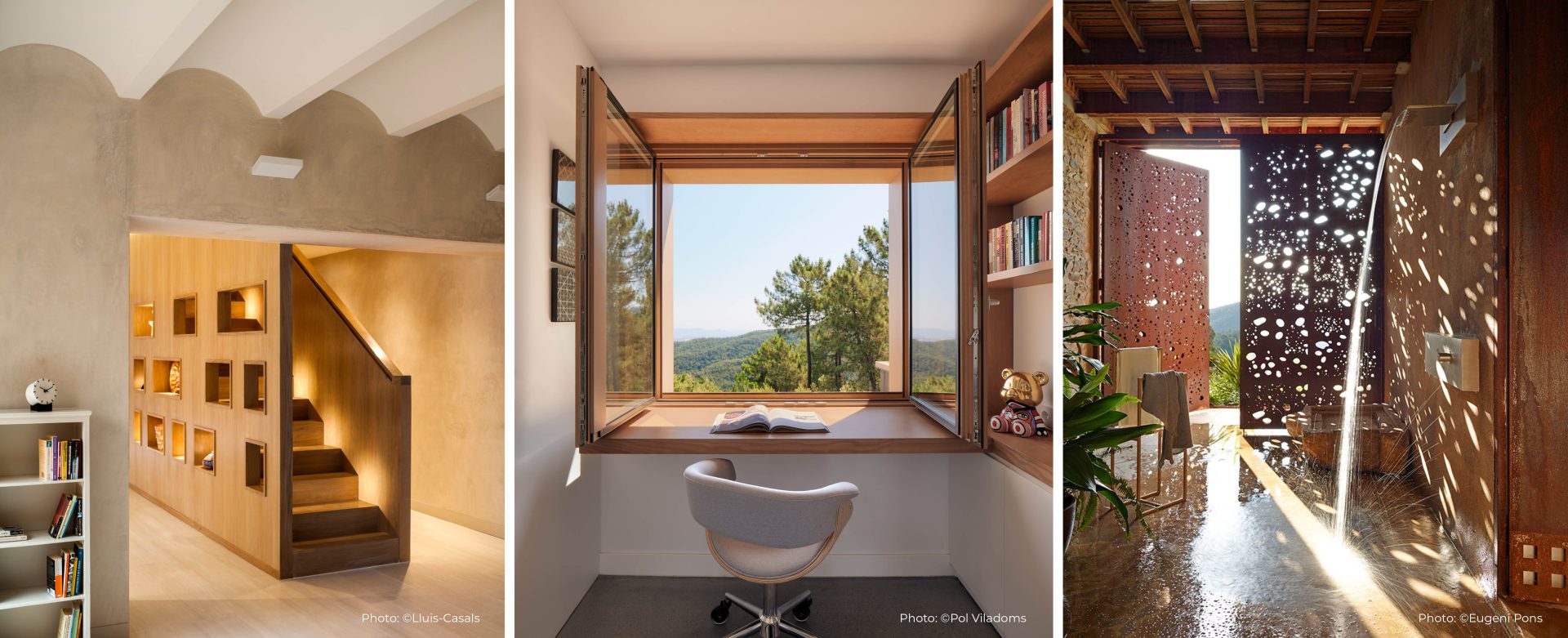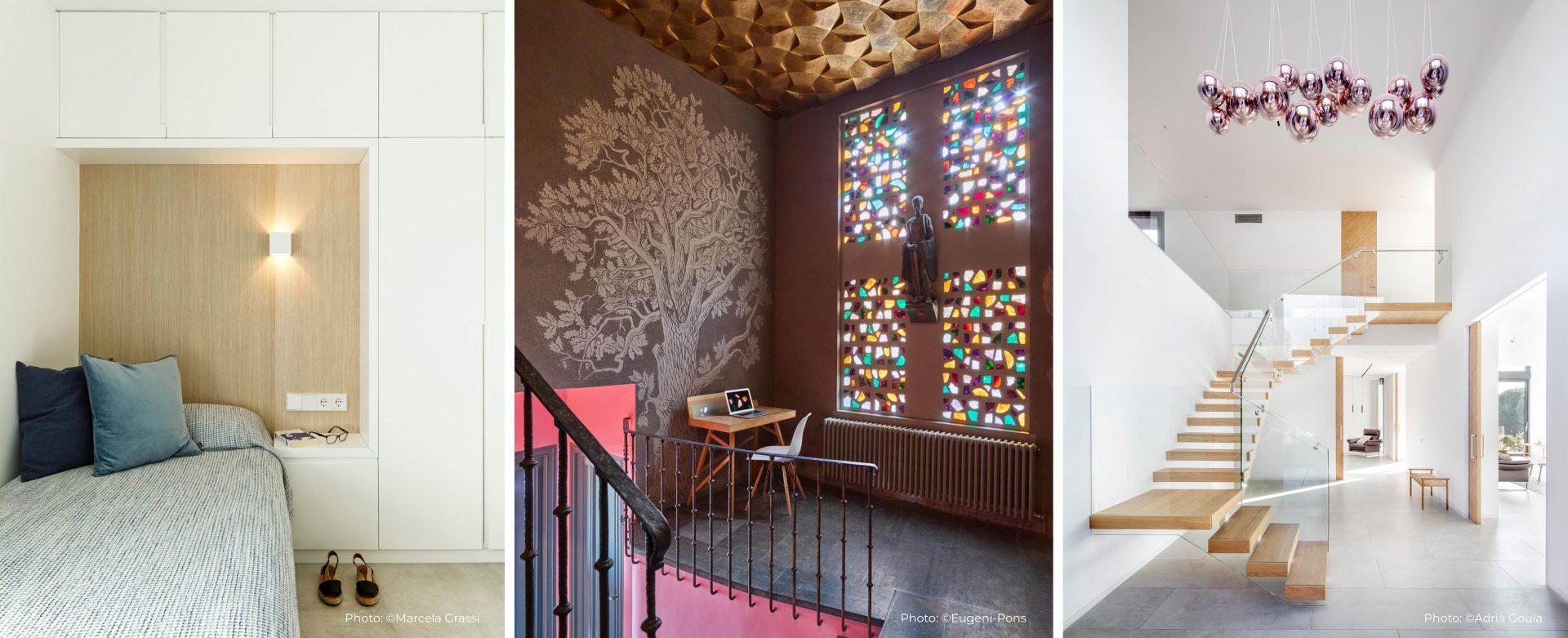Here we will explain the importance in understanding lighting in buildings. The funny thing about lighting in a building is that you don’t notice it unless there isn’t enough. Then comes the frustration and the question: why wasn’t this better designed? There is nothing worse than working at a desk with not enough light. Or cooking in a kitchen and not being able to read your recipe. Or walking down your garden path and tripping down the stairs. Understanding lighting in buildings is essential. The way natural and artificial light illuminates spaces influences your entire experience of that space. It changes the feeling of a space, the textures, the colours, the forms and even the use of a space.
When there are no windows, it’s easy to think you just need one or two recessed spotlights, for example. But choosing the position of the spotlight, the temperature (colour) of the light, the type of bulb, etc, all influence the feeling and functionality of the room. The experience is further influenced by whether you choose a wall sconce, a pendant or a lamp and whether you make them dimmable (being able to increase or decrease the brightness of the light at the switch).
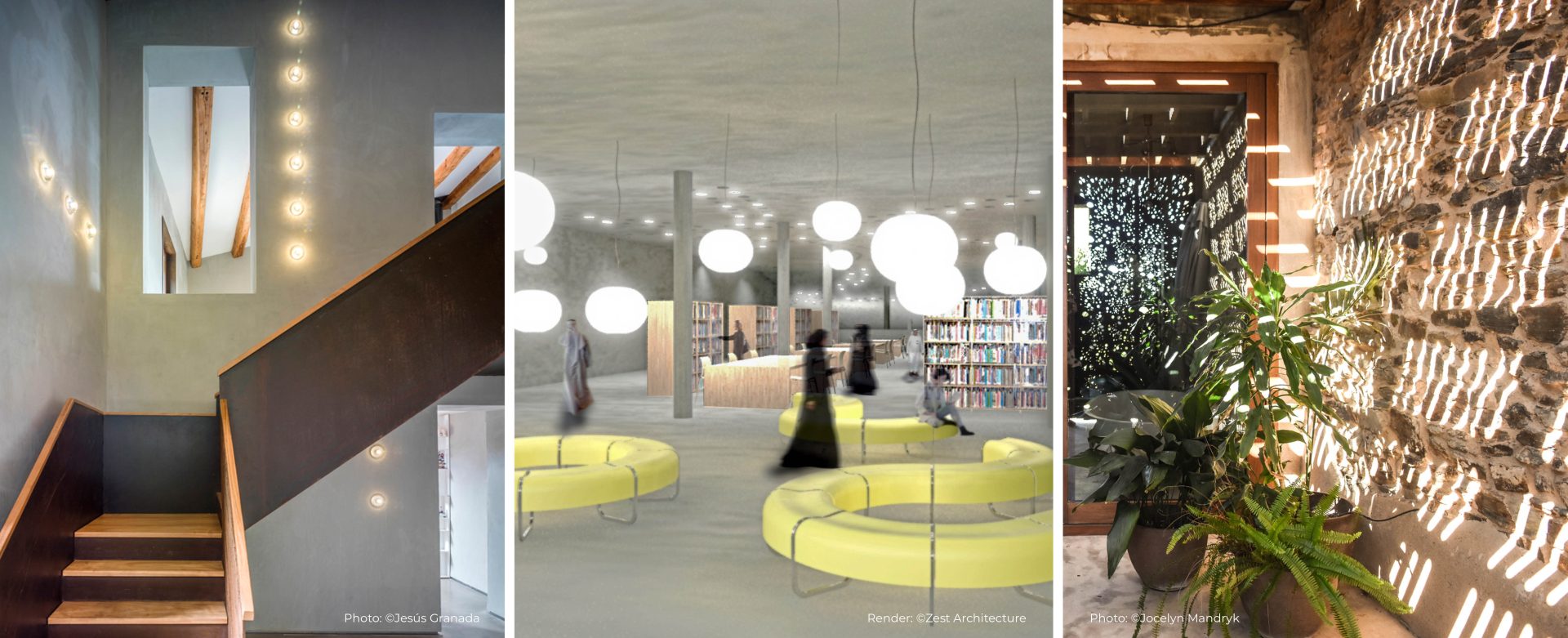
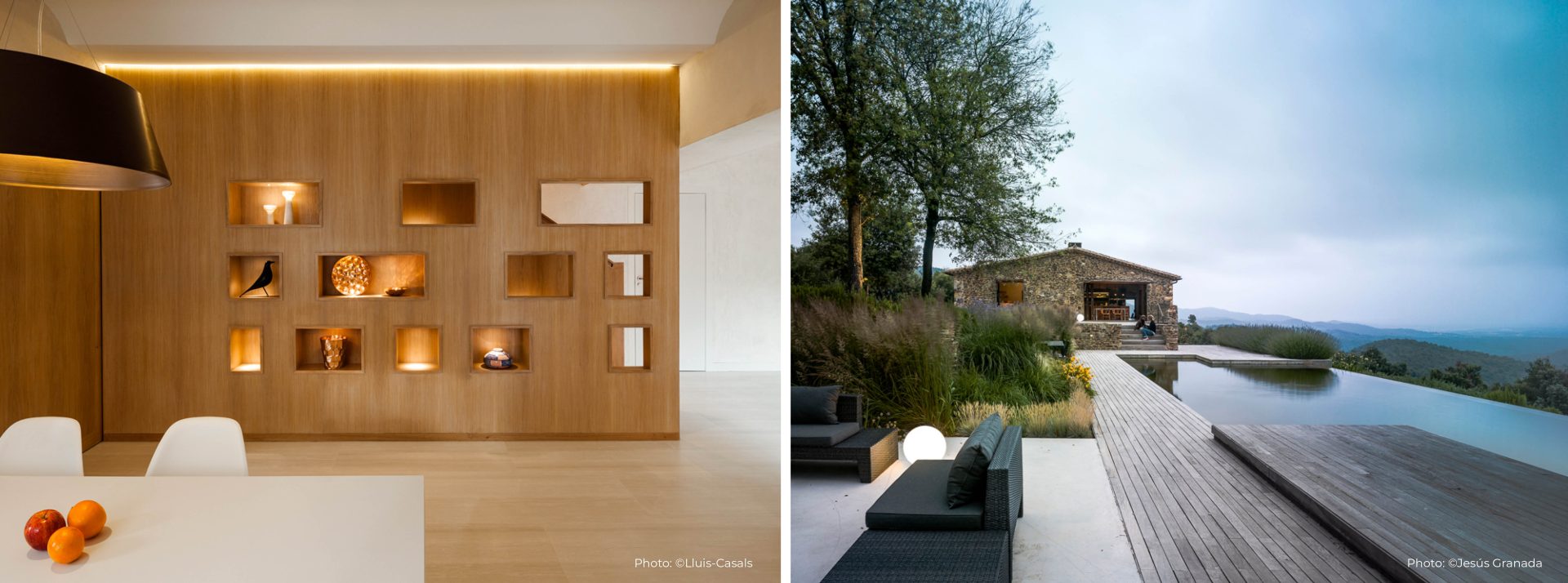
Designing with natural light
Natural light is the invisible magic that breathes life into buildings. It makes small spaces feel big and un-claustrophobic. It also makes big spaces feel inviting or art galleries feel captivating, hospitals feel comforting and homes feel alive. But the power it has also makes it important to control. Too much natural light can cause glare and too much direct sunlight can damage furniture, destroy appliances and affect the intended use of the space.
Understanding where the light comes from, at what time of day and for how long is key. In Spain we are in the Northern Hemisphere which means the heat and direct sunlight comes from the South. Direct sunlight can be fantastic, bringing beams of warm, bright light into your home. But if you are designing an art gallery, for example, it is the North light that is your friend as it brings indirect light with less glare. East, morning light awakens your spaces early and usually quite fast and starts to heat the space up quickly which, in Summer, is not always desired. West, afternoon light lasts longer and creates a lot of glare due to the horizontal rays of sun as the sun sets. Orientating your building based on its function, therefore, becomes essential and shading techniques are indispensable.
Too much natural light, however, can present its own problems and the amount of glass in buildings needs to be controlled. In the article (Day)Lighting the way to greener and healthier buildings, the World Green Building Council looks into this dilemma. Glass skyscrapers, for example, have an increased energy consumption as glass is a huge source of heat loss and gain.
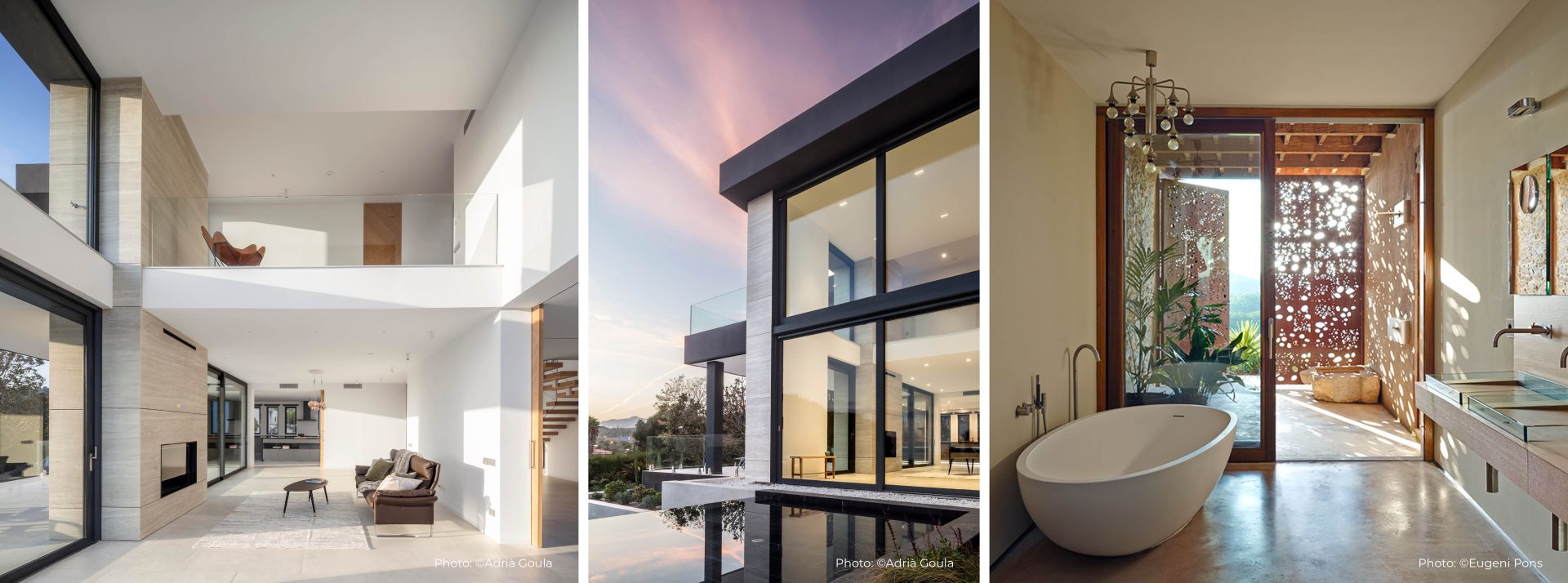
Designing with artificial light
The most important thing to think about is the atmosphere you want in each space. Often, it is best to have different types of lights on different switches so that you can control the mood in the room. Dimmable wall sconces and floor lamps will create cosy, romantic spaces, while brighter recessed or surface-mounted spots can be switched on when more light is needed or when art calls to be illuminated.
Exterior lighting can greatly affect your experience of the natural environment. If you have a beautiful house in nature, we normally keep exterior lighting to a minimum so that you can enjoy the stars. Small footlights create less severe shadows and are great for stairs while light posts illuminating trees can be a wonderful way to create inobtrusive light. Solar lights are great in that they require no electricity but they tend to be hard to control as they automatically turn on at night. Often exterior lights with motion sensors are the way to go in a garden.
Popular restaurants and hotel lobbies are usually the ones that have the best lighting. Imperfections disappear when the lighting is dim which makes you feel at ease, but if it is too dim and you can’t read the menu, you notice it. Bringing natural light into the interior is essential and creates bright, welcoming, airy spaces. However, artificial light that is bright like daylight, has the opposite effect, making the space feel cold, harsh and unwelcoming. Then again comes the importance of lighting in buildings.
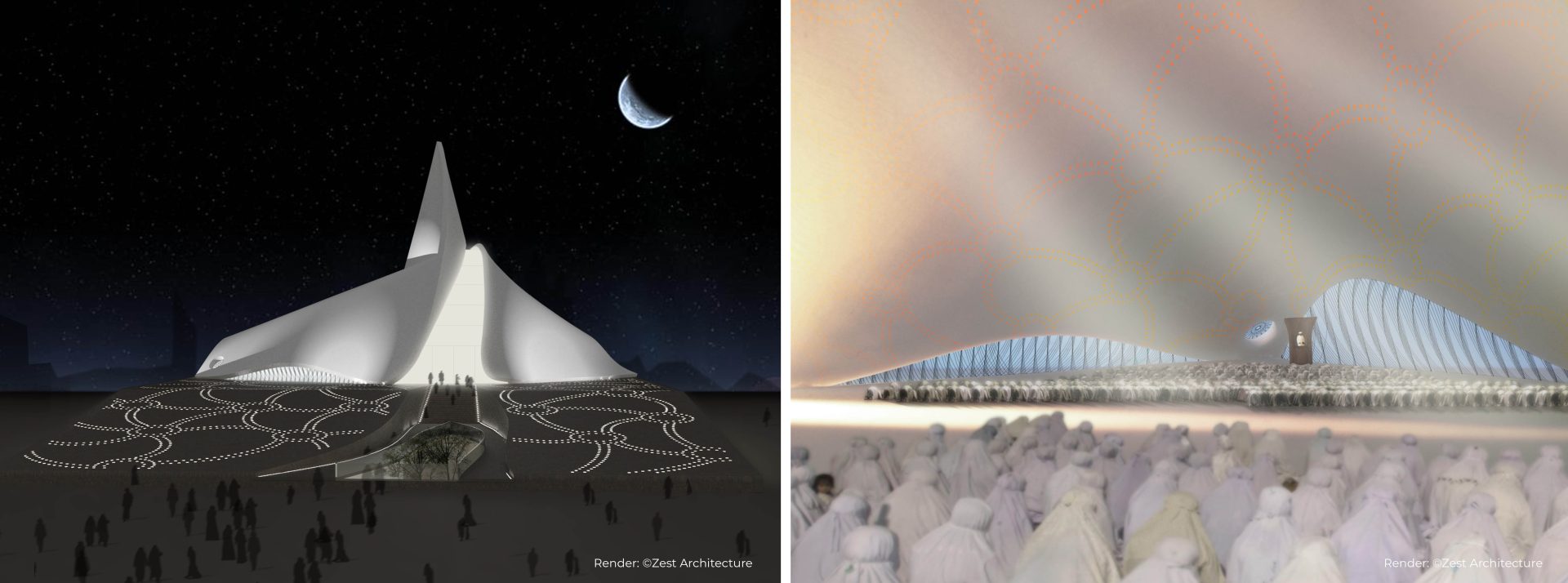
Understanding artificial light
Light temperature (k)
The warmth, or colour of a light is measured on the Kelvin scale and the lower the colour temperature, the warmer the light. A candle is about 2000k while daylight is about 5500 – 6500k. We normally specify a temperature of 2700k which gives a warmer, more orange light. The standard lightbulb tends to be 3000k which is whiter, and therefore, colder. If you aren’t careful, you might end up with a 4000k bulb that gives off a sterile light synonymous with hospitals.
Wattage (w)
If you want to know how much electricity your light draws, look at the wattage. The higher the wattage, the brighter the light, and the more electricity it draws.
Types of light bulbs
To understand the importance of lighting in buildings we need to be aware of the type of bulbs that exist. There are 4 main types of bulbs: LED (Light Emitting Diode), CFL (Compact Flourescent), Halogen and Incandescent.
LED
LED bulbs are the most efficient and energy-saving and so it is our bulb of choice. An LED bulb will draw 6 times less energy than an incandescent and reduce your carbon footprint by up to 800%. They have a longer lifespan, don’t give off heat or contain mercury and are good for task lighting as they are bright. These days, a lot of light fixtures include integrated LED bulbs which can be a good thing (they can last for up to 50,000 hours), but sometimes clients want to just be able to easily change a bulb and not have to replace the whole fixture, even if it will technically last for many, many years.
Something to be aware of is that LEDs can be a bit fussy when it comes to dimming. Sometimes electricians will prefer to use incandescent bulbs for dimmable lights but this is not necessary. You can dim LED bulbs, so long as you use a LED dimmer switch and a dimmer-compatible LED bulb. All LEDs have drivers that convert mains power (typically 230 V AC) to 12-24 V DC, and the driver needs to be dimmer-compatible. This is really important, as if not done correctly, your LED light will start to flicker at low brightness and even go off completely.
CFL
These can emit lots of different colours, are cheaper than LEDs, last longer than incandescents and are pretty energy efficient but not as good as LEDs. They are mainly used in large spaces like garages. They contain mercury which is a toxic waste and so the bulbs need to be carefully disposed of.
Halogen
These are dimmable and quite energy efficient but less so than CFLs and LEDs and have the shortest lifespan of all 4 bulbs. They give off a bright white light so are good for recessed and under-counter lighting. Something to note is that they give off a lot of heat so need to be kept away from things that can catch alight.
Incandescent
These are the most common and inexpensive but are not energy efficient and only last about a year. They give off a warm light and can easily be used with dimmers. 80-90% of the energy consumed is lost in the form of heat.
Light and materials
The importance of lighting in buildings has also to do with materials and textures. The type of light that comes into the building can also change based on interior materials and textures. Bright white walls which work really well in places like Spain where the sunlight is warmer in colour, works less well in places like the Netherlands, for example, where skies are often grey and harsher meaning that warmer tones of white should be used in the interior.
As you can see, lighting buildings correctly is an art in itself and very, very important. It can be the make or break in what brings your home together.
At ZEST Architecture, we spend hours in the design phase, carefully crafting spaces that celebrate natural light and combine artificial light in intelligent ways. If you need help designing your perfectly illuminated dream home, don’t hesitate to get in touch.
